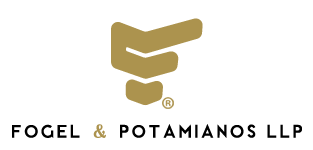
In the previous post regarding earn-outs, we went over examples of earn-out scenarios. In some instances, the buyer is not only acquiring the company, but the people to help operate the larger enterprise. Sellers may be asked to take key rolls within the buyer’s company post-sale. Let’s look at an example.
In 2016, Sotheby’s acquired Art Agency, an art and advisory consulting firm, as stated in Sotheby’s 10Q. It reads in part:
On January 11, 2016, Sotheby’s acquired certain entities comprising the business of Art Agency, Partners, a firm that provides a range of art-related services to art collectors, in exchange for initial cash consideration of $50 million and potential future earn-out payments of up to $35 million…
The purchase agreement governing the acquisition of AAP includes non-competition and non-solicitation covenants that continue in effect until January 2021. In connection with this acquisition, each of the former principals of AAP also entered into a five-year employment agreement with Sotheby’s that extends through January 2021. Each employment agreement also includes non-competition and non-solicitation covenants that continue in effect for 12 months following the end of employment.
As indicated above, in connection with the acquisition of AAP, Sotheby’s agreed to make future earn-out payments to the former principals of AAP not to exceed $35 million in the aggregate, contingent on the achievement of a level of cumulative financial performance within the Impressionist, Modern and Contemporary Art collecting categories, as well as from AAP’s art advisory business. Progress against the cumulative financial target (the “Target”) is measured at the end of each calendar year during the four to five year performance period following the acquisition, after adjusting the Target to reflect the annual growth or contraction of the auction market for Impressionist, Modern and Contemporary Art, when compared to the year ended December 31, 2015.
Here, it is important to note several items:
First the compensation is $50 million in cash and another $35 million in potential earn-outs over 4 to 5 years. The earn-out is 41.18% of the total purchase price. But there are several reasons for this. First, principles from the acquired company were given positions within Sotheby’s over a 5 year term. Thus, the sellers, who now become employees of the buyer, have more control over the performance of the earn-out. When negotiating an earn-out, as a seller, you generally want to stay away from a large percentage of the purchase price structured as an earn-out. However, in this case, the sellers are able to exercise operational control post-sale for a considerable period of time (4-5 years). However, this can lead to issues for the buyer, should the sellers who are now employees, sacrifice long-term progress for short-term results (i.e. hitting short term financial targets at the expense of long-term success). The buyer here may include operational covenants that, if violated, would trigger a non-payment or reduced payment of the earn-outs which were affected.
Second, the earn-out is based on financial targets measured at the end of the calendar year, targets which are adjusted based on market fluctuations. This is a case where the art market prices can fluctuate based on supply and demand, and so the earn-out is structured so that if a rising tide raises all boats, so to speak, then the earn-out would be adjusted. Similarly, if there is a contraction in the market, earn-outs would be adjusted against the market.
Interestingly, in the most recent Sotheby’s 10Q filing, it says the following:
The cumulative financial performance target associated with this earn-out arrangement was achieved in the fourth quarter of 2016. The remaining $17.5 million owed under the earn-out arrangement will be paid in annual increments of $8.75 million in each of March 2019 and March 2020.
So here we see that the earn-out was trigged at the end of 2016, with $17.5 million paid to date. There are now two payments of $8.75 million remaining for 2019 and 2020 to the sellers.
Fogel & Potamianos LLP‘s General Counsel Group serves as outsourced general counsel to small and middle market companies, as well as high net worth individuals. Our Corporate Practice Group provides expertise in M&A dealmaking.
Disclaimer
This blog is provided for general informational purposes only and no attorney-client relationship with Fogel & Potamianos LLP is created. By using the blog, you agree that the information on this blog does not constitute legal or other professional advice. The blog is not a substitute for obtaining legal advice regarding a potential matter from a qualified attorney licensed in your state.

